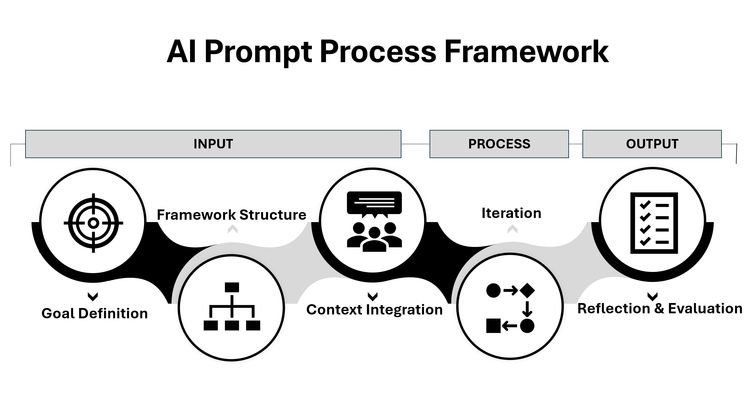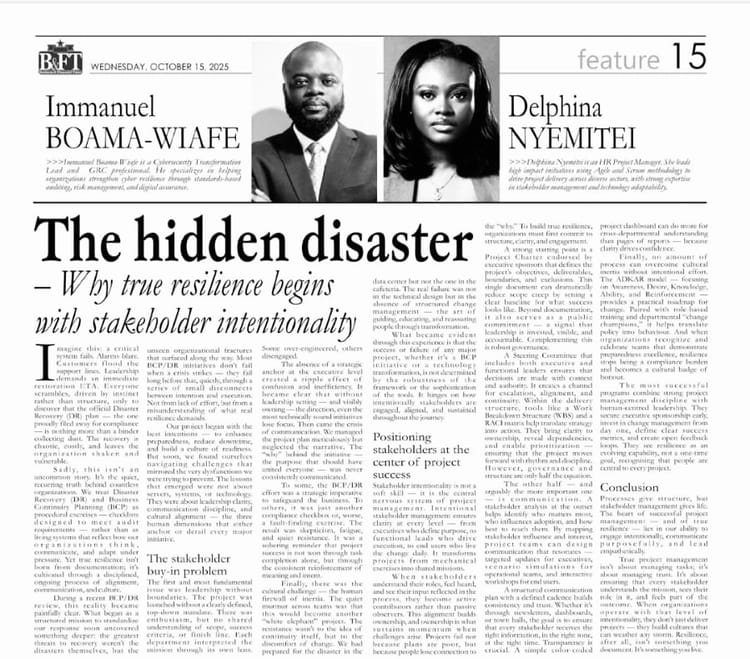The Art of Crafting a CV That Gets You Hired

In today’s competitive job market, standing out is a challenge. Many candidates feel the need to over-explain their experience, leading to lengthy, unfocused CVs that fail to make an impact. This is a critical mistake.
As someone with extensive experience hiring for diverse roles, I’ve learned that the most effective CVs are not the longest-they are the most intentional. Your goal should not be to list everything you’ve ever done but to clearly and concisely communicate your value in the advertised role to the recruiter.
With hundreds-sometimes thousands-of applicants vying for the same role, your CV needs to be strategically structured to capture attention quickly while demonstrating relevance and impact.
What Are Recruiters Looking For?Recruiters operate under immense pressure to identify the best candidates as efficiently and effectively as possible:
• Efficiency: They must scan and evaluate hundreds of CVs within a short timeframe.
• Effectiveness: They need to ensure that shortlisted candidates truly align with the role’s requirements.
If your CV is long-winded, unclear, or overloaded with unnecessary details, recruiters may move on without a second glance. Your job as a candidate is to make their job easier by presenting a data-rich, concise document that speaks directly to the role’s requirements.
How to Leverage What Recruiters Are Looking For
Think of yourself as a salesperson, and your CV as your sales pitch. Unlike a live interview, where you can clarify points in real time, your CV must do all the work. However, this doesn’t mean cramming in excessive information.
The best approach is to strike a balance-providing just enough high-impact details to showcase your expertise while remaining clear and digestible.
The Breakdown Strategy: Aligning Your CV to the Job Posting
Most job descriptions are structured into three key sections:
1. Role & Responsibilities
2. Basic Qualifications
3. Preferred Qualifications
Each section provides insight into what the employer is looking for, and your CV should be strategically structured to reflect these priorities.
1. Role & Responsibilities: Aligning Your Experience with the Job
The Role & Responsibilities section outlines the core functions and day-to-day expectations of the position. This section serves as a roadmap for structuring your CV in a way that demonstrates direct alignment with the role.
Recruiters and hiring managers assess candidates based on how well their past experience reflects these responsibilities. Your CV should go beyond listing job titles and duties-it should include specific examples of how you have successfully executed similar tasks, supported by quantifiable achievements.
How to Align Your Experience
1. Analyze the Job Description
• Identify recurring themes in the role’s responsibilities.
• Highlight keywords that indicate critical tasks (e.g., “strategic planning,” “stakeholder management,” “process optimization”).
2. Match Your Experience with the Responsibilities
• If you have direct experience, present it clearly and concisely with measurable achievements.
• If your experience is indirect but relevant, emphasize transferable skills that demonstrate your ability to succeed in the role.
3. Use Impact-Driven Statements
• Instead of listing duties, showcase accomplishments that reflect the responsibility in action.
• Use the STAR method (Situation, Task, Action, Result) to frame your experience in a compelling way.
Example: Strong vs. Weak CV Statements
Job Responsibility:
“Manage cross-functional teams to drive project success.”
❌ Weak Approach:
“Worked with different teams to complete projects.”
✔ Strong Approach:
“Led a cross-functional team of 10 members across marketing, product, and sales to successfully launch a new product, achieving a 15% increase in market penetration within the first quarter.”
By incorporating specific data points, the second statement immediately demonstrates impact rather than simply stating a duty.
2. Basic Qualifications: Your Must-Have Criteria
Basic qualifications represent the non-negotiable requirements for the job. These serve as the primary filters recruiters use when reviewing CVs. If you don’t clearly demonstrate that you meet these requirements, your application may not progress.
This is where strategic storytelling becomes crucial. Even if you haven’t held the exact job title before, you likely possess transferable skills that align with the qualifications. The key is framing your experience in a way that makes it easy for recruiters to recognize your fit for the role.
Example: Demonstrating Transferable Skills
Let’s say a job posting includes the following basic qualification:
“Experience developing cross-functional relationships with product management and marketing teams.”
Now, imagine you come from a consulting background and are applying for a marketing role in a tech company. While your title may not have involved product management and marketing teams directly, you may have worked on a project that required stakeholder coordination across similar teams.
A weak CV might overlook this connection, but a strong CV would frame it like this:
❌ Before (Weak Approach):
“Worked as a consultant on various client projects.”
✔ After (Strong Approach):
“Successfully managed a marketing project by coordinating stakeholders from product management and marketing teams to ensure timely buy-in and implementation.”
This phrasing bridges the gap between your previous experience and the new role, making it clear that you have relevant, applicable skills.
3. Preferred Qualifications: Your Competitive Advantage
Preferred qualifications are not mandatory, but they can set you apart from other candidates. If you meet any of these criteria, emphasize them strategically to differentiate yourself. If you don’t, focus on how your existing experience brings comparable value.
For example, if a preferred qualification states:
“Experience with data-driven decision-making in marketing strategy.”
You might not have held a marketing analytics role, but if you have experience in leveraging data to inform business decisions, you can frame it like this:
✔ “Utilized customer engagement data to optimize marketing strategies, resulting in a 25% increase in campaign ROI.”
This demonstrates that while you may not have been in a purely data-driven marketing role, you have applied similar principles in your work.
Key Takeaways: Crafting a CV That Works
• Be concise – Aim for one to two pages maximum. Recruiters don’t have time for lengthy narratives.
• Tailor your CV – Don’t submit a generic document. Align your experience with the job description.
• Highlight impact – Use quantifiable achievements where possible (e.g., “Increased campaign ROI by 30%” rather than “Worked on marketing campaigns”).
• Showcase transferable skills – If you’re transitioning into a new industry or role, frame your experience in a way that resonates with the recruiter.
• Make it easy to scan – Use bullet points, clear headings, and a professional format.
At the end of the day, your CV should tell a compelling, data-driven story about why you are the best candidate for the job. When done right, it won’t just get read-it will get results.





Member discussion